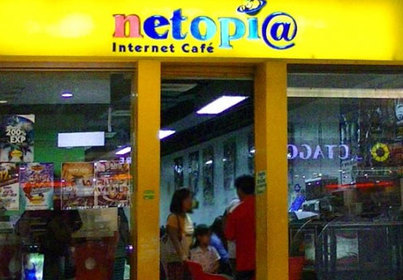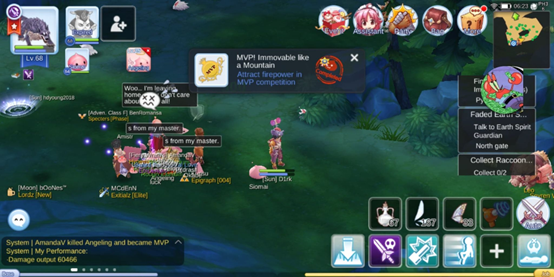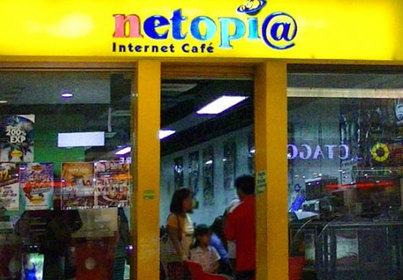I was walking around the Philippine Game Dev Expo (PGDX 2024) late last July when I came across a peculiar booth featuring a familiar friend: Rakion Online. If you look up Rakion Online, you’ll find out that it was a game released here in the Philippines almost 2 decades ago, with a re-release in the works by PlayPark.
For me, Rakion Online was one of the many games that served as the building blocks of my childhood – and the house that those blocks built was the internet cafe.
Fast forward to today, I’m left with the question – “What ever happened to those internet cafes?”
Back in the early 2000s, life was simpler. The pace of the world was slower, much like the internet speeds of the time. As a younger gamer back then who wasn’t as tech savvy as I am now, my gaming influence was heavily influenced by my surroundings – my home, the schoolyard, and the friends I made.
My gaming preferences were limited to what was available – consoles and PC with dial-up internet at home, or the computers at the school library. Since I didn’t know much about consoles back then, the school library became my go-to gaming spot.
I played what everyone was playing at the time – AdventureQuest (formerly known as Battleon) and other various flash games on sites like Neopets, Miniclip or Newgrounds. As time went on, it reached the point where finding a vacant PC at lunch time was next to impossible. Eventually, I had to make due with the dial-up connection at home.

Months passed with this setup, and everything seemed fine until I discovered Ragnarok Online through K-Zone, a monthly magazine popular among kids in the Philippines back then. The magazine introduced me to the sixth episode of Ragnarok Online—Amatsu and Kunlun—and I was eager to try it out at home. However, as I mentioned, I was on dial-up internet. It took four days for the game to finish patching, and when it finally did, it was unplayable.
Fortunately, my sister was a gamer, too. She played games like Dota, Neopets and even used my Battleon account so her turn on the PC was often longer. It was through her that I was introduced to the world of internet cafes.
The Internet cafe culture in the Philippines back then revolved around community, gaming and simply having a good time.
There were no influencers to shape the public opinion about games. Social media wasn’t as sophisticated as it is today making your local internet cafe your central hub for gaming discussions. Online forums were filled with information – sometimes right, sometimes not – with little to no validation unless it came from the source itself. Playground rumors, like the infamous Mew under the moving truck in Pokemon, found an extension in the internet cafe.

Internet cafes weren’t just a haven for gamers or would-be gamers. They were a lucrative business model, with patrons coming from all walks of life.
I remember one time when a group was shouting at each other over a Dota game, while a businessman nearby was busy answering emails, and in another corner, a teenager was sweet-talking someone over Yahoo Messenger. This wasn’t just limited to local internet cafes either – franchises like Netopia or B Connected had all sorts of patrons coming in daily. Whether you’re a student or not, you’d still be seen as an equal to a gamer if you had the skills or money to back it up.
Why mention money when we’re talking about internet cafes? Money played a significant role in internet café culture. It wasn’t just about gaming; it was about life lessons in entrepreneurship, stocks, and leadership. Did you know back then, you could sell your in-game currency for real life cash? This was especially true in Ragnarok Online, where Zeny traders made it big, starting in an internet cafe. The stock market was taught through other means, like the stock market in Neopets,or understanding price fluctuations in Ragnarok with in-game card prices varying depending on the server and rarity. Leadership skills were taught through guilds and coordinating raids.
However, not everything was all rainbows and butterflies. There were dark times, too – people would actually kill for prestige in Ragnarok Online. A quick Google search for the “Grand Tip Bag” will paint a grim picture. Phishing and scams were also prevalent and it didn’t matter what game you were playing or where you came from. It was the wild west of gaming, where moderation was more of a suggestion rather than a requirement.

Decades have passed since my time in internet cafes, and like most of the patrons from that era, we grew up.
PC games eventually got ported to mobile, like Ragnarok to Ragnarok X: Next Generation or Eternal Love, and League of Legends to Wild Rift. In a way, we could say the internet cafes have been ported to our pockets. Gone are the days of heading to an internet cafe after school, especially with our own PCs and consoles at home. Ironically enough, the more things change, the more things stay the same.
Thanks to Riot’s Valorant, the internet cafe scene is booming again. Franchises like Mineski and TNC are thriving, reminding us that while internet cafes may now fit in our pockets, they still hold a special place in our hearts.


